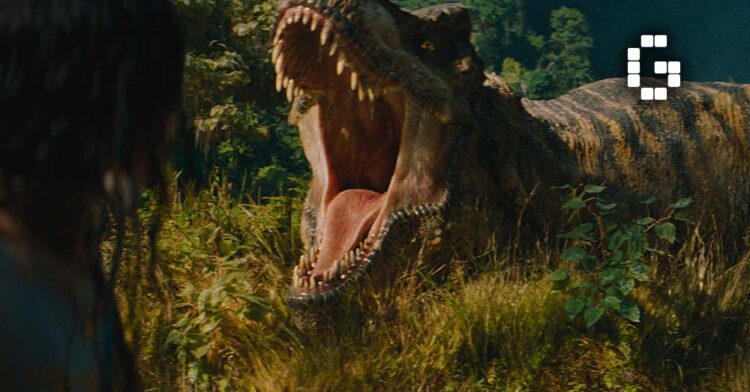Jurassic World: Rebirth arrives as the latest chapter in the long-running dinosaur franchise, following the global success of Jurassic World Dominion. Marketed as a revitalization of the franchise, Rebirth sets out to explore bold new directions, introducing never-before-seen biomes, original dinosaurs, and a darker, more survival-focused narrative.
Backed by the vision of director Gareth Edwards and an A-list cast led by Scarlett Johansson, expectations are sky-high. The film promises breathtaking visuals, dramatic tension, and a return to the awe-inspiring terror that made Jurassic Park a cultural phenomenon.
But does Rebirth live up to the legacy of its predecessors, or does it stumble under the weight of its ambitions? Here’s our full review, diving deep into its story, visual spectacle, dino-action, and where it succeeds or falls short.
A New Chapter with Familiar Dangers
Set five years after Jurassic World Dominion, Earth has largely reclaimed itself, and the remaining dinosaurs now inhabit secluded equatorial zones. The plot follows a daring scientific expedition to gather DNA from three legendary species— The Diplodocus that dominates the land, the Mosasaurus that swims the seas, and the Quetzalcoatlus that soars through the sky—each guarding their territory in treacherous new environments.
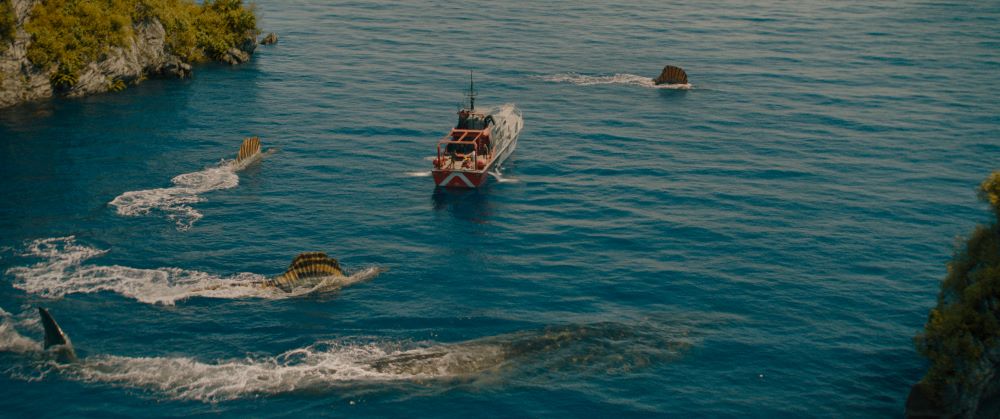
Led by Johansson’s character, the mission appears straightforward at first. But as the team delves deeper into an abandoned facility, a terrifying new threat emerges—one never seen before in the franchise. What begins as a research mission quickly turns into a high-stakes survival story.
A Visual Spectacle from Start to Finish
Jurassic World: Rebirth is nothing short of a visual showcase, whisking audiences across scorching jungle floors, into the inky silence of the deep sea, and through storm‑wracked skies. Warm shafts of sunlight pierce thick equatorial canopies, while below the waves, the Mosasaurus prowls through eerie, blue‑lit waters long before its hulking outline is fully revealed. Above the cloud line, the mighty Quetzalcoatlus dives between thunderheads like a living fighter jet.
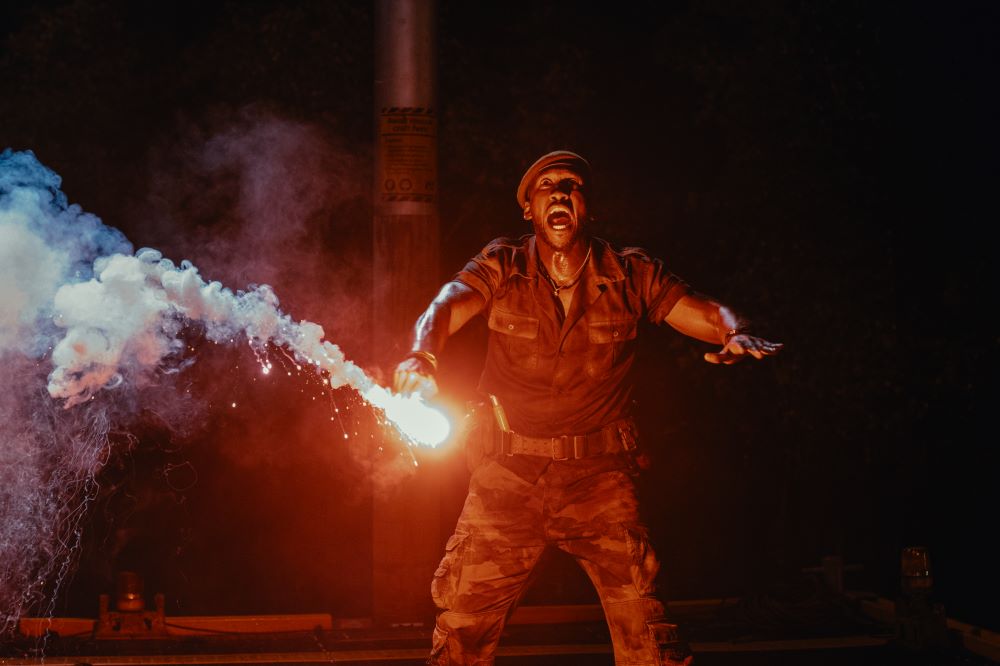
Every environment feels meticulously crafted—light shimmers off foliage and seawater, gusts of wind ripple across ancient stone, and every scale or scar on the dinosaurs looks hand‑tooled. In particular, close‑ups of the Diplodocus capture delicate muscle twitches and gentle puffs of breath, making these creatures feel less like digital effects and more like living, breathing giants.
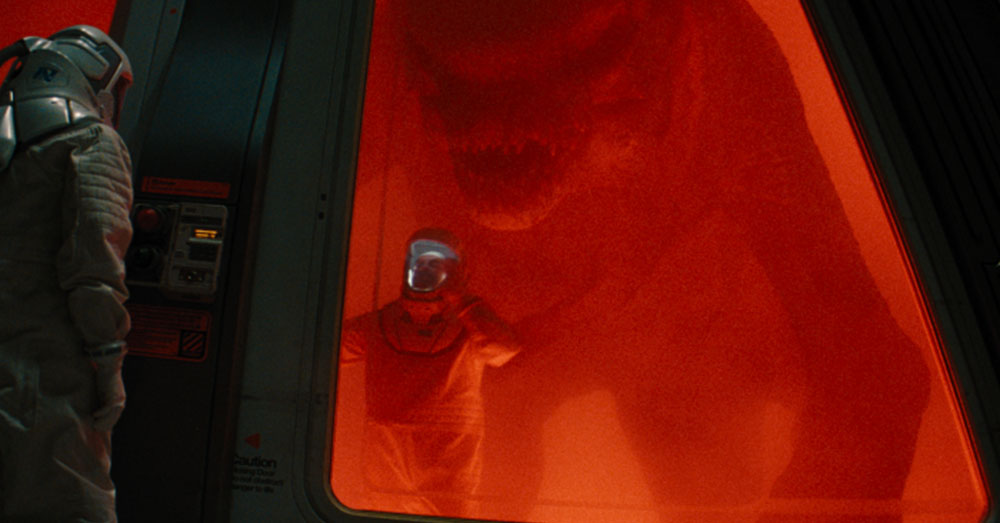
Action That Hits—and Misses
When the dinosaurs strike, Rebirth delivers adrenaline in spades. Each encounter is tailored to its habitat: tense foot chases through tangled vines, claustrophobic underwater cat‑and‑mouse games, and aerial skirmishes that plunge from the clouds to the jungle floor. The film wisely prioritizes survival tactics and split‑second improvisation over flashy gunfire, grounding the spectacle in raw, unpredictable nature.
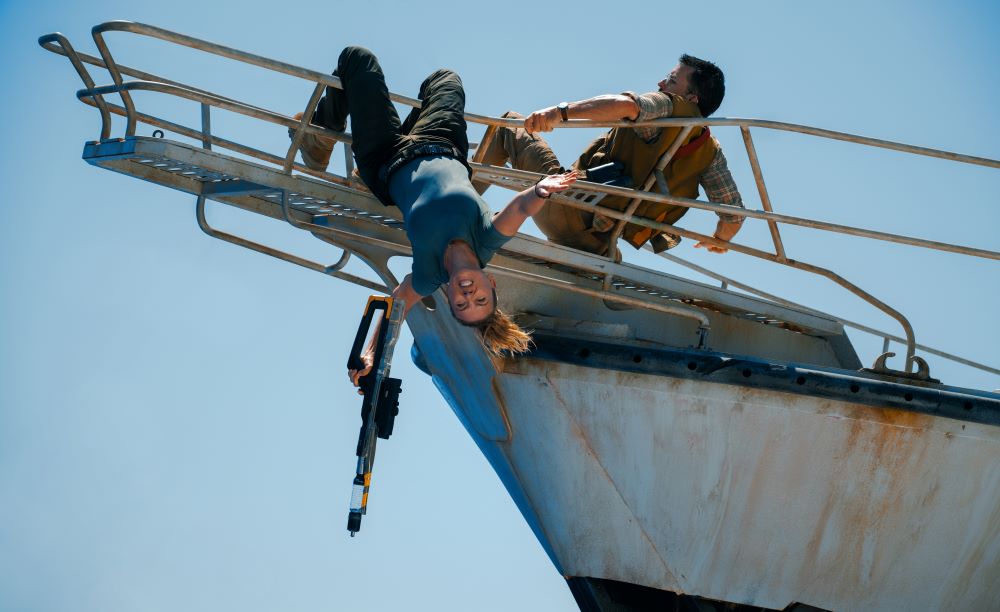
Sequences inside an abandoned research complex add horror‑movie suspense, as flickering lights and malfunctioning doors force the team into ever-tighter corridors while something unseen stalks them. Practical effects, weighty sound design, and brisk editing keep the tension high, even if viewers are occasionally yanked out of the moment by an ill‑timed joke or lapse in character logic.
A Weak Core Mission
For all its technical polish, Rebirth falters once the team reaches the island. After a turbo‑charged first act, the narrative loses momentum: the supposedly vital blood‑collection mission is wrapped up in minutes, replaced by a family‑drama detour that feels shoehorned into the script. Dialogue shifts from urgent to awkward, exemplified by a cliffside scene where jokey banter lands seconds after a fatal accident, tonally whiplashing the audience out of the peril.
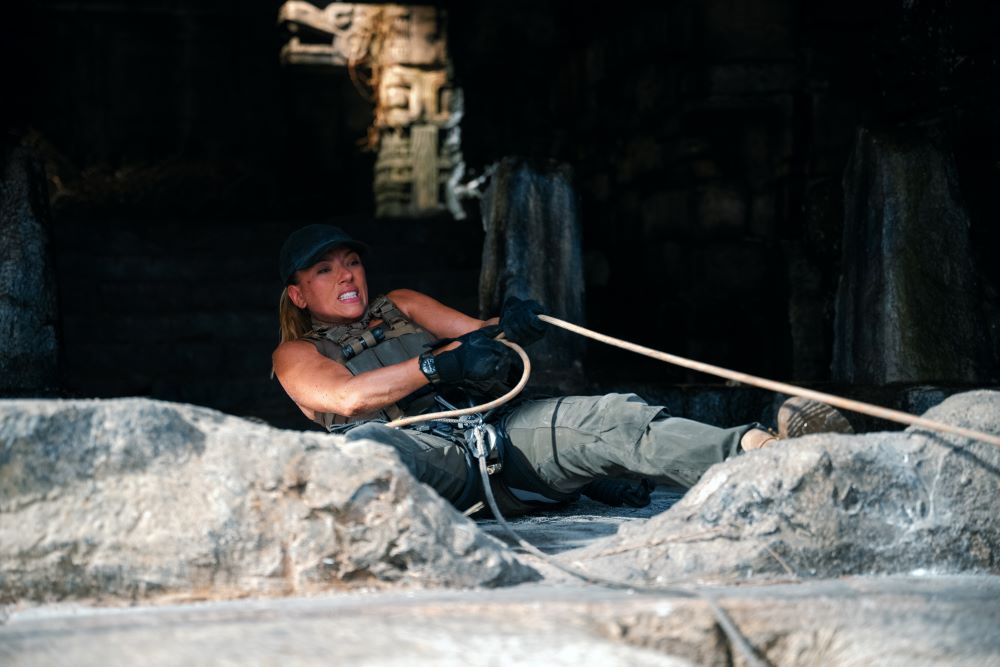
Equally baffling is the team’s lack of preparedness. Early on, we see a heavily armed guard wiped out by a dinosaur, yet the expedition’s experts later hike straight into danger with zero firearms or protective gear, never scavenging equipment even after stumbling across it. This glaring logic gap undermines the film’s stakes and the characters’ credibility, especially in a world that already knows how lethal dinosaurs can be.
Missing the Jurassic Magic
Long‑time fans may also lament the absence of the franchise’s signature slow‑burn dread. The hush‑hush kitchen raptor scene and rain‑soaked T. rex breakout that defined the original Jurassic Park are replaced here by louder, faster set pieces that leave little room for suspense or philosophical reflection. The sense that “anything could go wrong at any second” rarely materializes, making Rebirth feel more like a modern action spectacle than a true return to the franchise’s awe‑and‑terror roots.
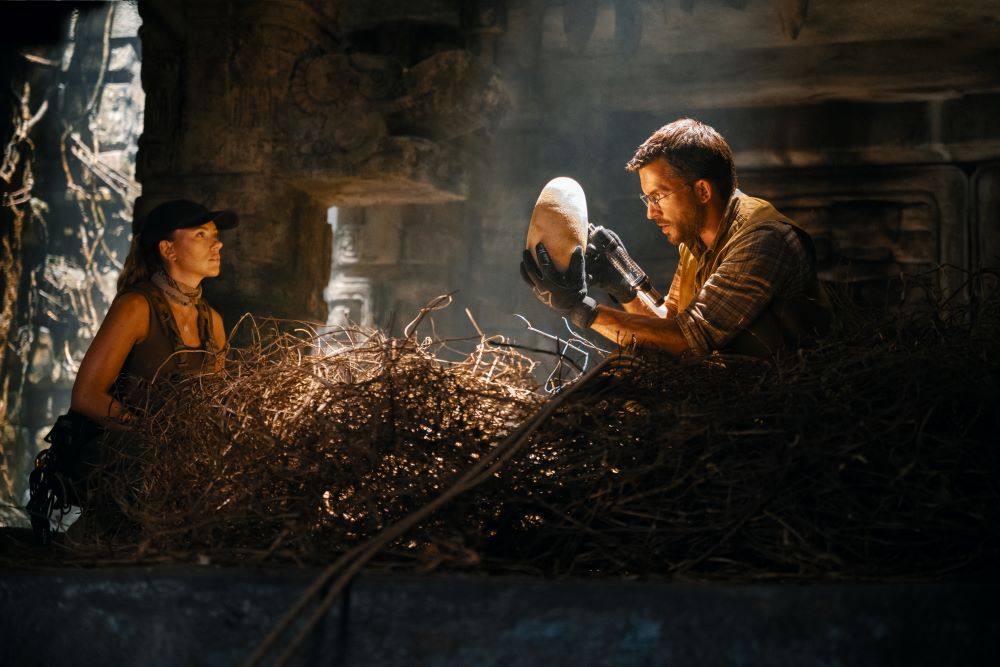
Verdict
Jurassic World: Rebirth dazzles the eyes and quickens the pulse with its gorgeous environments and inventive dino mayhem across land, sea, and sky. Sadly, the film’s narrative scaffolding can’t support its visual weight. Uneven pacing, flimsy character decisions, and jarring tonal shifts sap the tension right when it should peak. The result is an entertaining popcorn romp that looks incredible, yet never quite captures the primal wonder that made the original saga roar.
Join Us!
We are recruiting! If you want to break into the gaming media industry, don't miss out on the golden opportunity. Find out more: Malaysia. Overseas.Featured Video
The Review
Jurassic World: Rebirth
Jurassic World: Rebirth impresses with breathtaking visuals and thrilling dinosaur action across land, sea, and sky, but ultimately stumbles with uneven pacing, underdeveloped characters, and puzzling logic gaps. While it delivers blockbuster spectacle, it lacks the suspense, emotional weight, and iconic tension that made the original Jurassic Park films legendary. A visual treat, but not quite a classic.
PROS
- Visually Breathtaking Across Land, Sea, and Sky
- Realistic and Impressive Dinosaur Models
CONS
- Missing the lack of Classic Jurassic Feel
- Weak Middle & Rushed Main Mission
- Too many dialog with Forced Humor
- A Major Logic Gap, such as lack of Equipment











![[EXCLUSIVE] Creative Masterminds from Gearbox Software Reveal What Makes Borderlands 4 Worth the Wait](https://cdn.gamerbraves.com/2025/07/Borderlands-4-at-Bilibili-World-2025_Interview_FI-360x180.jpg)


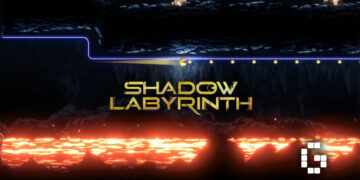

![[ASIA EXCLUSIVE] Bringing Back a Classic: Inside the Making of FINAL FANTASY TACTICS – The Ivalice Chronicles](https://cdn.gamerbraves.com/2025/06/FFT-Ivalice-Chronicles_Interview_FI2-360x180.jpg)


